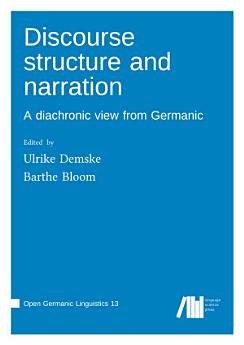Discourse structure and narration: A diachronic view from Germanic
About this ebook
About the author
Ulrike Demske is Professor of German Linguistics at the Universität Potsdam. Her research interests focus on morphosyntactic changes in the history of German. As a member of the Collaborative Research Center Limits of Variability in Language at the Universität Potsdam, Demske has recently been working on the interplay between grammatical processing and syntactic change, adressing the question of how processing ease affects syntactic change, given different dimensions of processing difficulties. A second focus of her current research is the impact of information and discourse structure on word order variation in prose narratives composed in the Early Modern Period of German. The creation of freely accessible research resources for investigating the historical syntax of this language period has always been a particular concern of hers (Baumbank.UP, Roko.UP, Potsdamer Zeitungskorpus - diachron).
Barthe Bloom is a postdoctoral researcher at the chair of English Linguistics at the Universität Erlangen-Nürnberg. Her previous position was in the DFG project Word Order and Discourse Structure in the Early Modern Period at the German department in Potsdam. Her work focuses on syntactic change in the Germanic languages, which she approaches from a usage-based, constructional perspective.








